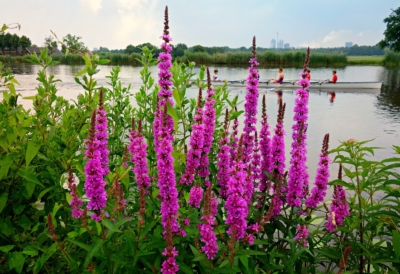Purple Loosestrife Control Options
Controlling Purple Loosestrife is not just crucial but essential too to protect the habitat of nearby wildlife, fish and native plants, because this invasive aquatic plant could germinate and grow quickly taking away all the nutrition and oxygen away from the soil, leaving a bleak and imperfect habitat for other plants. It’s necessary that you keep tracks of Purple Loosestrife and take all the 
There are various methods that could be used.
For successful Purple Loosestrife control, it is best to combine several methods.
1. Mechanical Control: hand-pulling, cutting and digging
This method is highly recommended when there are fewer plants and should be done prior to seed set. During the flowering stage, flowerheads must be cut and disposed of properly after a herbicide is applied.
Pulling the plants isn’t really an issue, but while doing so, care needs to be taken with fully removing the roots as they can sprout into new plant again. If you are eradicating the plant before when it’s the seed season, make sure to use a plastic bag, bend the plant over it and then cut or dig it. This way, you can contain the seeds from spreading around.
Also, make sure that you brush off your clothes and clean your equipment before leaving the site as it could also foster the dissemination process.
2. Chemical Control
Another technique is the chemical control where a specialized spray is applied to the plant. Homeowners should plan for spring and fall application. Mature plants will require four or five years of noxious weed control to achieve desired results.
3. Biological Control
Biological control is not an approved method of control for List A Species.
4. Cultural Control
Make sure your grasses are healthy and can compete with Purple Loosestrife. Fertilize and revegetate disturbed areas if needed.
The key to Purple Loosestrife control is to early detection and rapid response. The smaller the infestation, the easier to control it before the seed bank becomes too overwhelming. If you need help with noxious weed control, please submit estimate request.

